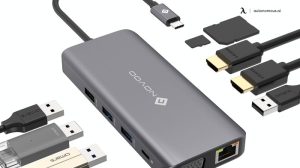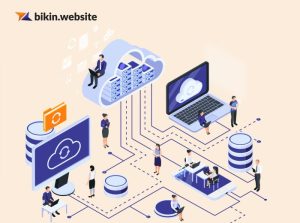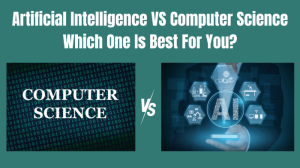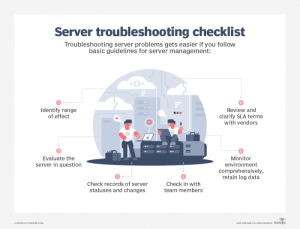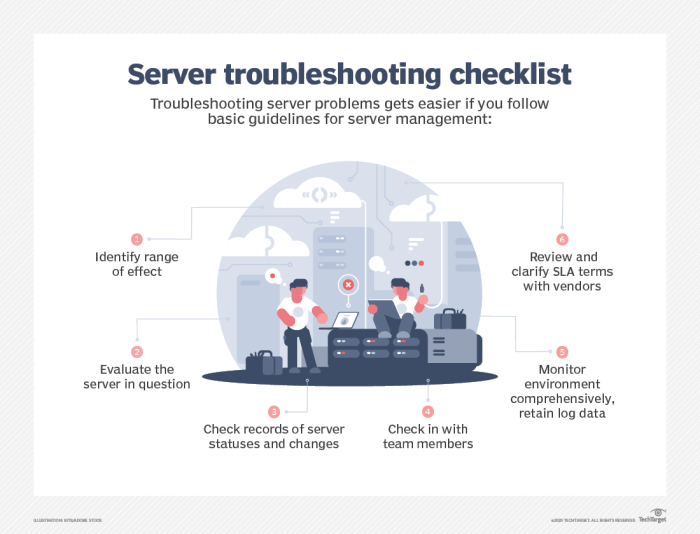
Step into the world of Computer systems troubleshooting tips where we unravel the mysteries of tech issues and empower you with the knowledge to conquer any glitch that comes your way. Get ready for a journey filled with insights, tips, and tricks to keep your systems running smoothly!
Embark on this adventure as we delve into the intricacies of troubleshooting computer systems, from common issues faced by users to the tools and software that can help you navigate the digital landscape with ease.
Computer Systems Troubleshooting Tips

When it comes to computer systems, users often face various issues that can disrupt their daily activities. From slow performance to software glitches, these problems can be frustrating. Troubleshooting plays a crucial role in maintaining computer systems and ensuring smooth operation. By following a systematic approach, users can efficiently identify and resolve issues to keep their systems running optimally.
Common Computer System Issues
- Slow performance: Programs taking longer to load or respond
- Software crashes: Applications freezing or closing unexpectedly
- Hardware malfunctions: Issues with components like the hard drive or RAM
- Internet connectivity problems: Difficulty in connecting to networks
Importance of Troubleshooting
Troubleshooting is essential for diagnosing and fixing issues that arise in computer systems. It helps users pinpoint the root cause of problems and implement effective solutions to prevent further complications. By troubleshooting regularly, users can maintain the health and efficiency of their systems, extending their lifespan and minimizing downtime.
Step-by-Step Process of Troubleshooting a Computer System
- Identify the problem: Determine the specific issue affecting the system
- Gather information: Collect data on when the problem started and any recent changes made
- Isolate the cause: Narrow down the potential reasons for the problem
- Implement a solution: Apply fixes based on the identified cause
- Test the solution: Verify if the issue has been resolved
- Prevent future problems: Take proactive measures to avoid similar issues in the future
Tools and Software for Computer Systems Troubleshooting
Some common tools used in computer systems troubleshooting include:
- Task Manager: To monitor processes and system performance
- Event Viewer: To view logs and track system events
- System File Checker: To scan and repair corrupted system files
- Antivirus Software: To detect and remove malware that may be causing issues
Mobile Computing
Mobile computing refers to the use of portable computing devices, such as smartphones, tablets, and laptops, that allow users to access and share information on the go. In contrast to traditional computing, which is typically done on desktop computers, mobile computing enables users to be more flexible and productive in various environments.One of the key benefits of mobile computing is the ability to stay connected and productive while on the move.
Users can access emails, documents, and other important information from anywhere, at any time. This flexibility allows for increased efficiency and collaboration, as well as the ability to work remotely.Popular mobile computing devices include smartphones like the iPhone and Samsung Galaxy series, tablets like the iPad and Samsung Galaxy Tab, and laptops like the MacBook and Microsoft Surface. These devices offer a wide range of features and functionalities to meet the diverse needs of users.Over the years, mobile computing has evolved significantly, with advancements in technology leading to faster processors, improved battery life, and enhanced connectivity options.
The rise of mobile apps has also transformed the way we interact with our devices, providing access to a wide range of services and tools at our fingertips.
Evolution of Mobile Computing
- Early mobile devices were limited in functionality and primarily used for calls and text messaging.
- The introduction of smartphones revolutionized mobile computing, offering features like internet browsing, email, and app support.
- Tablets emerged as a popular form factor, providing a larger screen for multimedia consumption and productivity tasks.
- Cloud computing has played a significant role in mobile computing, allowing users to store and access data remotely.
- 5G technology is set to further enhance mobile computing capabilities, with faster speeds and lower latency for a seamless user experience.
Computers Security
In today’s digital age, ensuring the security of our computer systems is paramount to safeguarding sensitive information and protecting against cyber threats. Let’s explore some common cybersecurity threats faced by computer systems and discuss best practices for securing them.
Common Cybersecurity Threats
- Malware: Malicious software such as viruses, worms, and ransomware that can infiltrate systems and cause harm.
- Phishing Attacks: Deceptive emails or websites designed to trick users into revealing personal information.
- Brute Force Attacks: Hackers attempt to gain unauthorized access by trying various password combinations.
- Denial of Service (DoS) Attacks: Overloading a system to make it unavailable to legitimate users.
Best Practices for Securing Computers
- Keep software updated: Regularly update operating systems and applications to patch security vulnerabilities.
- Use antivirus software: Install reputable antivirus software to detect and remove malware.
- Enable firewalls: Set up firewalls to monitor and control incoming and outgoing network traffic.
- Be cautious online: Avoid clicking on suspicious links or downloading attachments from unknown sources.
Importance of Data Encryption
Data encryption plays a crucial role in computer security by encoding information to prevent unauthorized access. It ensures that even if data is intercepted, it remains unreadable without the decryption key.
Tips for Creating Strong Passwords
- Use a mix of uppercase and lowercase letters, numbers, and special characters.
- Avoid using easily guessable information like birthdays or pet names.
- Create unique passwords for each account to prevent multiple accounts from being compromised if one password is leaked.
- Consider using passphrase instead of a single word for added security.
Computers Software
Software is a crucial component of computer systems, enabling users to perform various tasks and functions. It consists of programs and applications that allow the hardware to operate efficiently. In this section, we will explore the different types of software commonly used in computer systems, the role of operating systems, the importance of keeping software updated, and share tips for troubleshooting software issues on computers.
Types of Software
- System Software: Includes operating systems, device drivers, utilities, and other tools that enable the computer to function.
- Application Software: Programs designed for specific tasks such as word processing, graphic design, gaming, and more.
- Programming Software: Tools used by developers to create, debug, and maintain software applications.
Role of Operating Systems
The operating system acts as the intermediary between the hardware and software, managing resources, providing a user interface, and ensuring smooth operation of the computer system.
Importance of Keeping Software Updated
Updating software is essential to address security vulnerabilities, improve performance, and add new features. Regular updates ensure that the system remains secure and operates optimally.
Tips for Troubleshooting Software Issues
- Restart the computer to resolve minor software glitches.
- Check for software updates and install them to fix known issues.
- Run antivirus and anti-malware scans to detect and remove any malicious software affecting the system.
- Reinstall the problematic software if other troubleshooting steps fail to resolve the issue.
Computer Systems
Computer systems refer to a combination of hardware and software components that work together to perform various tasks and processes. These systems are essential for running applications, managing data, and executing instructions.
Components of a Computer System
- Central Processing Unit (CPU): The brain of the computer, responsible for executing instructions.
- Memory (RAM): Temporary storage for data and instructions currently being processed.
- Storage (Hard Drive, SSD): Permanent storage for data and programs even when the computer is turned off.
- Input Devices (Keyboard, Mouse): Allow users to input data and commands into the computer.
- Output Devices (Monitor, Printer): Display information and output results from the computer.
Difference Between Hardware and Software
Hardware refers to the physical components of a computer system, such as the CPU, memory, and storage devices. Software, on the other hand, consists of programs and applications that tell the hardware what to do.
Examples of Computer Systems
1. Personal Computer (PC)
A desktop or laptop computer used for personal or business purposes.
2. Server
A powerful computer used to store and manage data, applications, and services for multiple users or devices.
3. Embedded Systems
Specialized computer systems designed for specific tasks, such as controlling machinery, appliances, or vehicles.
4. Supercomputer
High-performance computers used for complex calculations and simulations in scientific research, weather forecasting, and other demanding applications.
Computers Technology
In the ever-evolving world of technology, advancements in computer technology play a crucial role in shaping our future. From faster processors to cutting-edge innovations, the impact of emerging technologies on computer systems is profound.
Latest Advancements in Computer Technology
- Quantum Computing: Quantum computers utilize quantum bits or qubits to perform complex calculations at incredibly high speeds, revolutionizing data processing.
- 5G Technology: The rollout of 5G networks enables faster internet speeds and lower latency, enhancing the performance of connected devices.
- Augmented Reality (AR) and Virtual Reality (VR): AR and VR technologies are transforming the way we interact with computers, creating immersive experiences for users.
Impact of Emerging Technologies on Computer Systems
- Enhanced Performance: Emerging technologies improve the speed, efficiency, and capabilities of computer systems, leading to enhanced user experiences.
- Increased Connectivity: The integration of new technologies promotes seamless connectivity between devices, enabling better communication and data sharing.
- Enhanced Security: Advanced technologies enhance cybersecurity measures, protecting computer systems from evolving threats and vulnerabilities.
Integration of Artificial Intelligence in Computer Technology
- Machine Learning: AI algorithms enable computers to learn from data, make decisions, and perform tasks without explicit programming, leading to automation and efficiency.
- Natural Language Processing (NLP): NLP allows computers to understand and generate human language, enabling voice assistants and chatbots to interact with users effectively.
- Computer Vision: AI-powered computer vision systems can analyze and interpret visual information, enabling applications like facial recognition and image processing.
Examples of Innovative Computer Technologies Shaping the Future
- Edge Computing: Edge computing brings data processing closer to the source, reducing latency and enabling real-time decision-making for IoT devices.
- Biometric Authentication: Biometric technologies like facial recognition and fingerprint scanning enhance security and streamline access control on computer systems.
- Blockchain Technology: Blockchain ensures secure and transparent transactions, revolutionizing industries like finance, healthcare, and supply chain management.
Computers Gadgets

When it comes to computer gadgets, the market is filled with a variety of innovative devices that can enhance the user experience in different ways. From smartwatches to VR headsets, these gadgets offer unique functionalities and features that cater to different needs and preferences.
Popular Computer Gadgets
- Smartwatches: These wearable devices not only tell time but also allow users to track their fitness activities, receive notifications, and even make calls right from their wrist.
- VR Headsets: Virtual Reality headsets immerse users in a virtual world, providing an interactive and immersive experience for gaming, entertainment, and even training simulations.
- Wireless Earbuds: These compact gadgets provide a tangle-free listening experience, perfect for on-the-go users who want to enjoy music or take calls without the hassle of wires.
Functionality of Computer Gadgets
- Enhanced User Experience: Computer gadgets offer convenience, efficiency, and entertainment, making everyday tasks more manageable and enjoyable for users.
- Increased Productivity: Gadgets like smartwatches and wireless earbuds help users stay organized, connected, and focused on their tasks, boosting productivity levels.
- Entertainment and Gaming: VR headsets and other gadgets provide a new level of entertainment and gaming experience, allowing users to escape reality and immerse themselves in virtual worlds.
Troubleshooting Computer Gadgets
- Ensure the gadget is charged properly and turned on before use.
- Check for software updates and install them to address any bugs or performance issues.
- If the gadget is not connecting to other devices, try resetting the Bluetooth or Wi-Fi connection settings.
- If the gadget is malfunctioning, refer to the user manual for troubleshooting steps or contact customer support for assistance.
Final Conclusion
As we reach the end of our exploration into Computer systems troubleshooting tips, remember that knowledge is power when it comes to resolving tech troubles. Armed with these insights, you’re equipped to tackle any computer system issue like a pro. Stay curious, stay tech-savvy, and keep troubleshooting!
FAQ Explained
What are some common computer system issues users face?
Users often encounter issues like slow performance, system crashes, software compatibility problems, and network connectivity issues.
Why is troubleshooting important for maintaining computer systems?
Troubleshooting helps identify and resolve issues promptly, ensuring optimal performance and preventing major system failures.
What tools or software are commonly used in computer systems troubleshooting?
Tools like diagnostic software, task managers, and antivirus programs are commonly used for troubleshooting computer systems.

